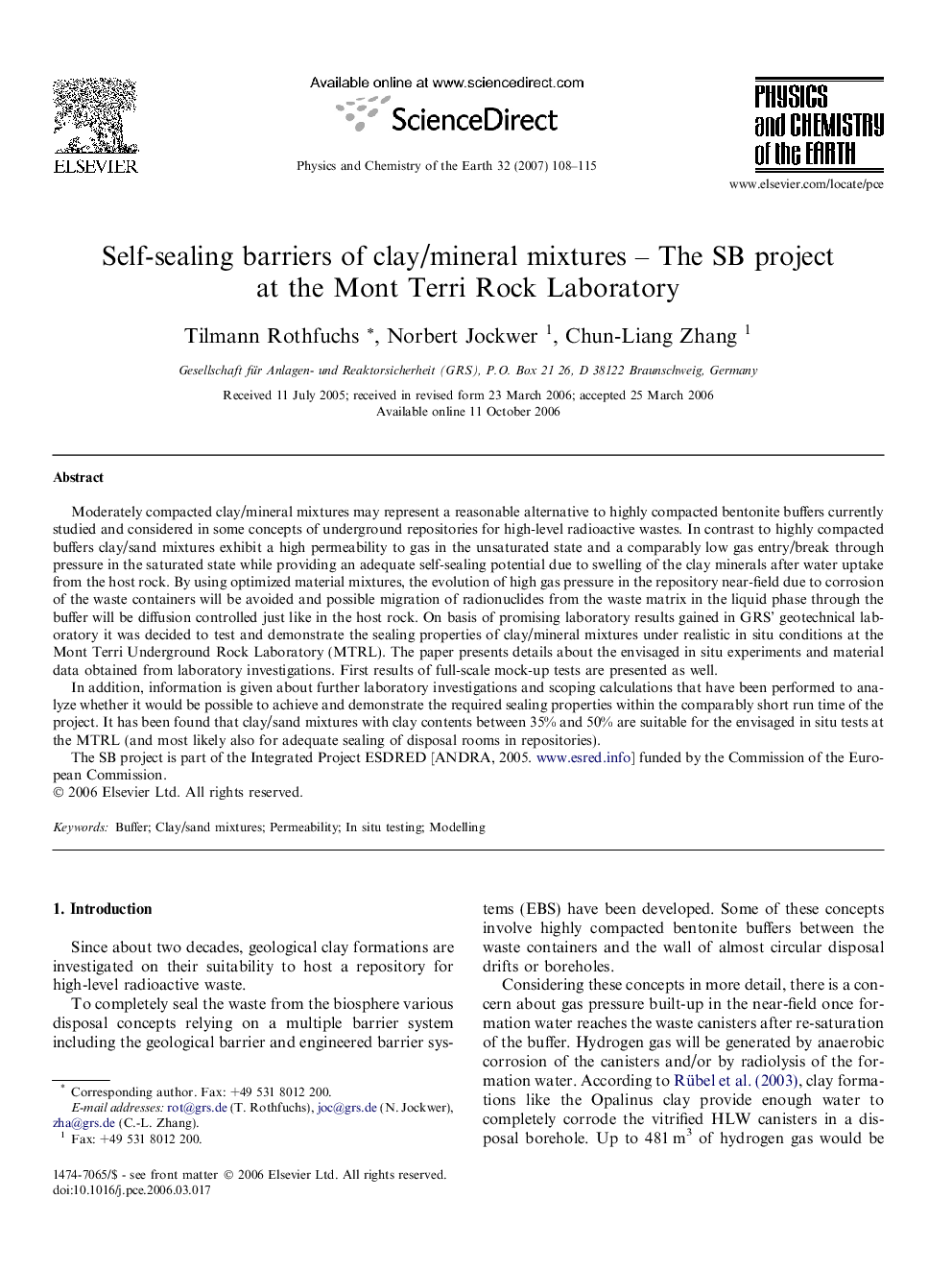| کد مقاله | کد نشریه | سال انتشار | مقاله انگلیسی | نسخه تمام متن |
|---|---|---|---|---|
| 4721912 | 1639405 | 2007 | 8 صفحه PDF | دانلود رایگان |

Moderately compacted clay/mineral mixtures may represent a reasonable alternative to highly compacted bentonite buffers currently studied and considered in some concepts of underground repositories for high-level radioactive wastes. In contrast to highly compacted buffers clay/sand mixtures exhibit a high permeability to gas in the unsaturated state and a comparably low gas entry/break through pressure in the saturated state while providing an adequate self-sealing potential due to swelling of the clay minerals after water uptake from the host rock. By using optimized material mixtures, the evolution of high gas pressure in the repository near-field due to corrosion of the waste containers will be avoided and possible migration of radionuclides from the waste matrix in the liquid phase through the buffer will be diffusion controlled just like in the host rock. On basis of promising laboratory results gained in GRS’ geotechnical laboratory it was decided to test and demonstrate the sealing properties of clay/mineral mixtures under realistic in situ conditions at the Mont Terri Underground Rock Laboratory (MTRL). The paper presents details about the envisaged in situ experiments and material data obtained from laboratory investigations. First results of full-scale mock-up tests are presented as well.In addition, information is given about further laboratory investigations and scoping calculations that have been performed to analyze whether it would be possible to achieve and demonstrate the required sealing properties within the comparably short run time of the project. It has been found that clay/sand mixtures with clay contents between 35% and 50% are suitable for the envisaged in situ tests at the MTRL (and most likely also for adequate sealing of disposal rooms in repositories).The SB project is part of the Integrated Project ESDRED [ANDRA, 2005. www.esred.info] funded by the Commission of the European Commission.
Journal: Physics and Chemistry of the Earth, Parts A/B/C - Volume 32, Issues 1–7, 2007, Pages 108–115